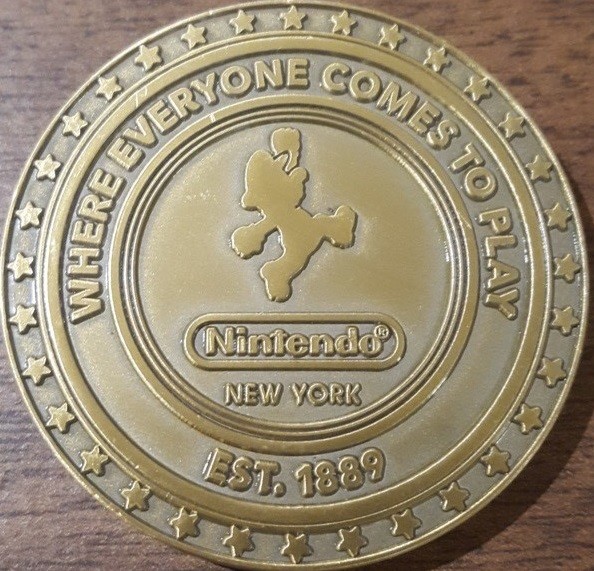- Home
- :
- All Communities
- :
- Services
- :
- Implementing ArcGIS
- :
- Implementing ArcGIS Blog
- :
- Where Everyone Comes To Play - Nintendo, and What ...
Where Everyone Comes To Play - Nintendo, and What It Takes to Be Innovative
- Subscribe to RSS Feed
- Mark as New
- Mark as Read
- Bookmark
- Subscribe
- Printer Friendly Page
This post was originally published on LinkedIn, April 9, 2018.
So I'm in New York City, NY recently with my family, and of course my kids, who are huge fans of video games, add the Nintendo World Store in NYC to our "must see" list during our visit. We stopped by and had a lot of fun touring the entire museum/store, and stocking up on goodies to take home. While we were there, I couldn't help noticing all of these Nintendo seals around the store, at the bottom of these seals are the words, "EST. 1889".

This really intrigued me. How can it be that Nintendo, one of the world's largest video game companies, was 129 years old?!? I turned to Wikipedia for the answer. Sure enough, Nintendo was founded as a playing card company on September 23, 1889, by Fusajiro Yamauchi. I had no idea it was that old; it's founding had predated electronic computers by almost 60 years. I was astonished that such a well-known, high-tech company, had such historic and modest roots.
This reminded me of one of my favorite informative items from Gartner, an American research and advisory firm providing information technology related insight for IT and other business leaders located across the world. It is a photo of a slide from one of their events, showing the results of an innovation survey; it states,
"The biggest threat to innovation is internal politics and an organizational culture, which doesn't accept failure and/or doesn't accept ideas from outside, and/or cannot change."
-Gartner
That statement is so true. Too many organizations are not innovative, due to these exact issues. When there is a lack of innovation, organizations stagnate and fall behind, and often do not get the return on investment for the technology they have already invested in. If they are private entities, they usually fail, because they cannot compete. If they are public entities, they are rendered ineffective and waste money. The cure to this is change management. Change is inevitable, but also not easy. We cannot ignore change. We must embrace it, part of that is accepting failure.
If you read the history section of the Nintendo Wikipedia entry, you will see that like many successful companies, not all of their endeavors are a success - these include a taxi company, a love hotel chain, a TV network, and a food company. Not all of their electronic gaming products have been huge successes, either. But the reason they are one of the leaders in this incredibly competitive industry, is because they are innovative - and part of that is accepting failure, accepting ideas from the outside, and changing.
So I put this challenge out there to all GIS practitioners: your job is to be innovative, so please do everything you can to make that happen. The people that are funding your work (shareholders, if you work for a private company - taxpayers, if you work for a government agency - donors, if you work for a non-profit) deserve a good return on their investment in you - that means you have got to use all of the capabilities you have available to you, and you have got to keep the technology current - it is the crux of your job. You have got to make it a priority and dedicate time for it.
Don't believe that one person cannot make a difference in an organization, there are many examples to prove otherwise, this being a great one: Accelerating Small-Town Services on a Small-Town Budget. Change management and innovation take time and resources, please invest in them. There's a difference between being a manager and a leader, you have a great opportunity to lead, please make the most of it. You have access to powerful technology that can make a difference in your organization, your community, and your life. As Denzel Washington so eloquently put it, "Don't just aspire to make a living. Aspire to make a dif...
Some ideas on where to start:
Learn the basics of Change Management. Here are some excellent resources: GovLoop, Harvard Business Review, McKinsey & Company, Kotter International, Prosci
Seek to be influential. Here are Three Differences Between a Manager and a Leader.
Communicate with, not to, your leaders. Seek them out. Learn their pain and their vision. Then propose solutions that alleviate their pain, and support their vision. They will become your supporters.
Get some help. Reach out to the GIS community, they are a powerful force.
Thanks to Michael Green and David Schneider for peer review of this post.
You must be a registered user to add a comment. If you've already registered, sign in. Otherwise, register and sign in.